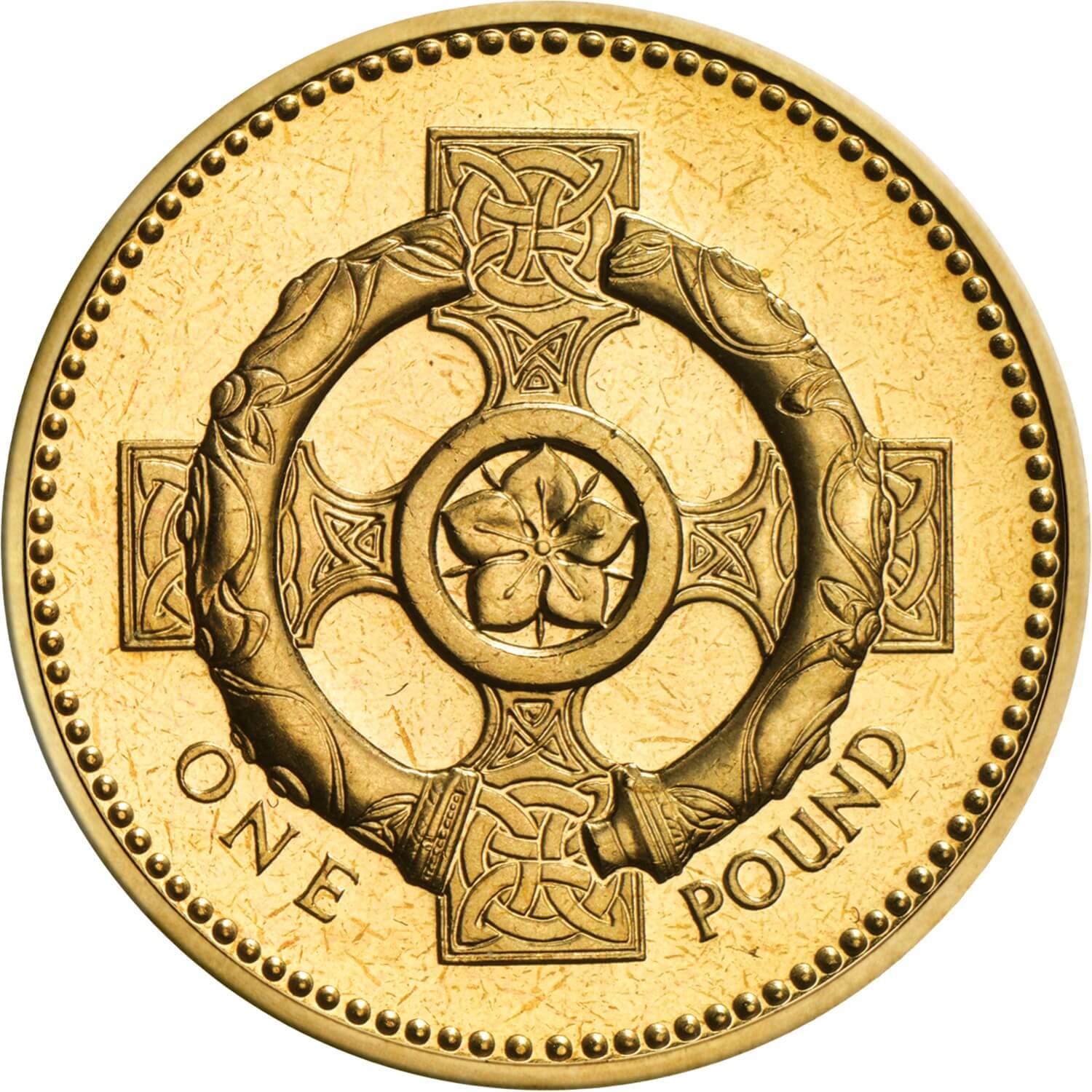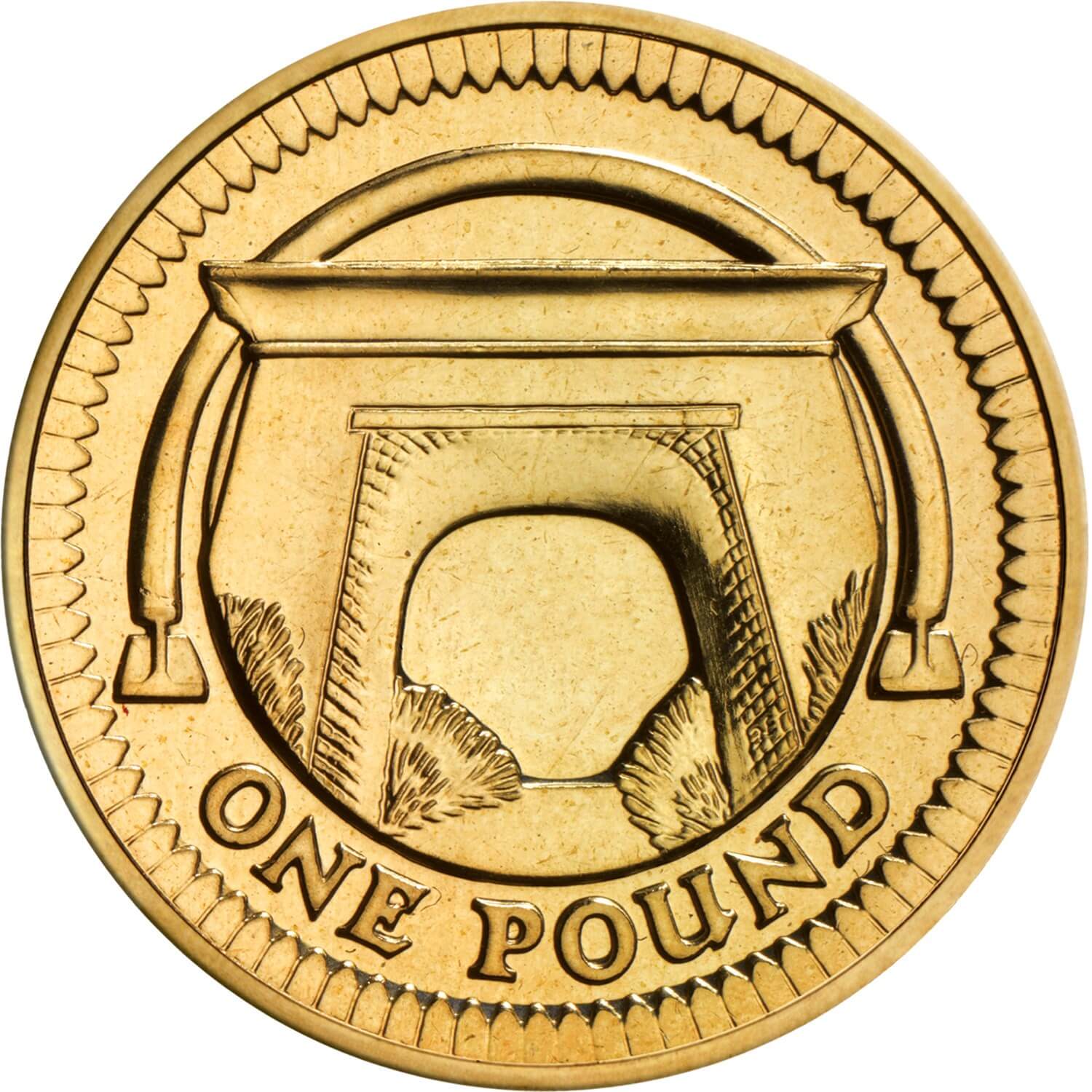
To celebrate St. Patrick’s Day, we have taken a look back at how Northern Ireland has been represented on UK £1 coins since the newer version of the round pound coin was introduced in 1983. How many do you have in your collection?

1986 and 1991 £1 Coin
The Northern Ireland £1 coin, the third in the series of four, was introduced into circulation on 21 April 1986. Appropriately, Northern Ireland was represented by the flax plant, whose fibres have - for centuries - been woven into world famous linens. The coin carried the edge inscription DECUS ET TUTAMEN, ‘an ornament and a safeguard’. On the obverse was the Maklouf portrait of Her Majesty The Queen.
Edge Inscription: DECUS ET TUTAMEN
Designer: Leslie Durbin

1996 and 2001 £1 Coin
Third in a four-year series which featured the constituent parts of the United Kingdom, the 1996 one pound coin represented Northern Ireland. Reaching deep into the history of Northern Ireland, Norman Sillman's reverse design depicted a richly decorated Celtic-style cross, surmounted by the famous Broighter collar. At the centre of the design lay a pimpernel, the lovely flower which flourishes around Lough Neagh. The obverse design was Raphael Maklouf's elegant portrait of Her Majesty The Queen.
Edge Inscription: DECUS ET TUTAMEN
Designer: Norman Sillman

2006 £1 Coin
The one pound coin for 2006 depicted Sir John Macneill's Egyptian Arch for Northern Ireland and was the third in the series of one pound reverse designs. The Bridge series, beautifully symbolic of unity, was conceived by wood engraver Edwina Ellis and, abandoning the more traditional heraldic approach, she opted for designs inspired by Britain’s great industrial heritage.
Edge Detail: Decorative pattern symbolising bridges and pathways
Designer: Edwina Ellis

2010 £1 Coin
Belfast used a coat of arms on its seal as early as 1643, but it was not until 1890 that the arms were granted officially. The shield of the coat of arms of Belfast provided an appropriate reverse for the 2010 £1 coin which represented Belfast, Northern Ireland, in the 'City Series'. Since the city port of Belfast has always been a busy shipbuilding centre, it was not surprising that a sea-going vessel should dominate the shield. The triangular pattern came from the arms of the Chichester family, while the bell was a simple reference to the city's name and appeared on tokens issued by Belfast tradesmen in the seventeenth century. The motto of the arms PRO TANTO QUID RETRIBUAMUS - translated as 'what shall we give in return for so much' - was the edge inscription of the Belfast £1 coin.
Edge Inscription: PRO TANTO QUID RETRIBUAMUS
Designer: Stuart Devlin

2014 £1 Coin
In 2014 two new £1 coins – one for Northern Ireland and one for Scotland – completed the series of four that began in 2013 with coins for England and Wales. The coins all featured designs by Timothy Noad, who is a professional calligrapher and a Fellow of the Society of Scribes and Illuminators. The coins continued the tradition of honouring the home nations of Britain on the £1 coin by incorporating familiar floral emblems. But, for the first time ever, they were paired together with other less well-known floral symbols in one reverse design. This design featured the shamrock and flax for Northern Ireland.
Edge Inscription: DECUS ET TUTAMEN
Designer: Timothy Noad
Discover great stories from history and how we're celebrating these moments within The Royal Mint
Read more
